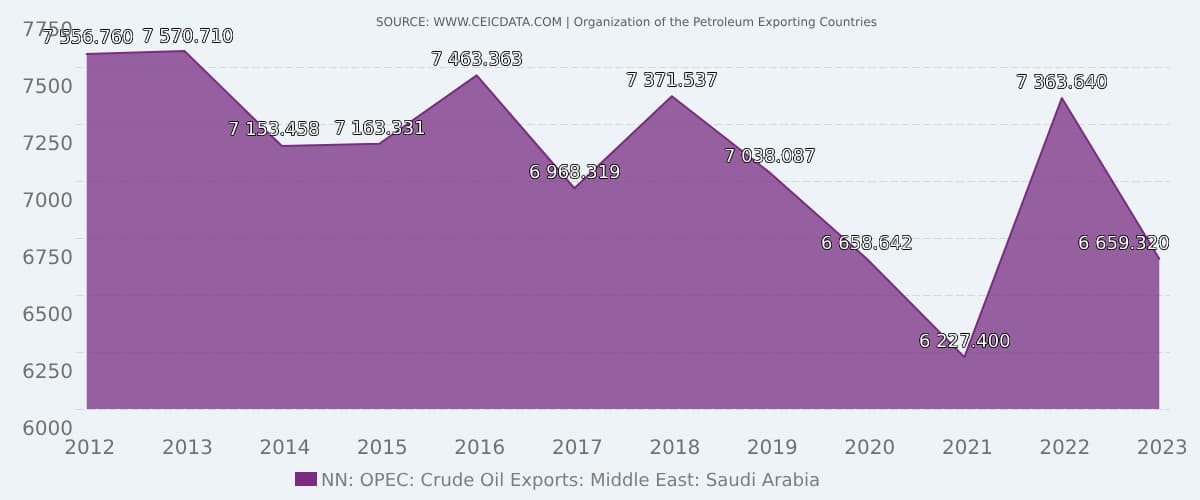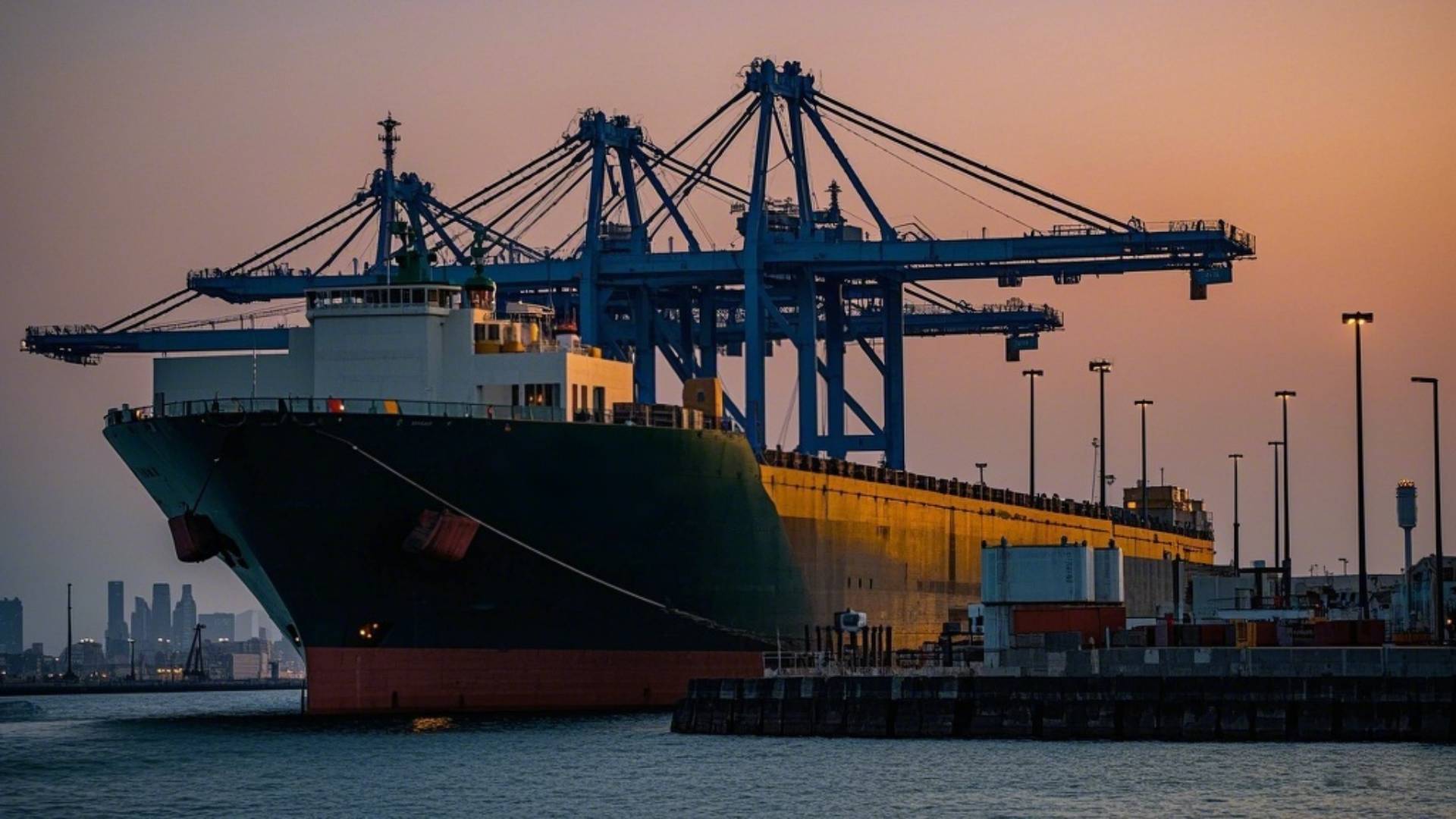This article mainly introduces the time and cost of Shipping from China to Saudi Arabia as well as the documents that need to be prepared. After understanding this information, you can transport goods more efficiently and reduce the problem of extended transportation time.
Table of contents
2. Saudi Arabia's foreign trade share
3. Sea Shipping time from China to Saudi Arabia
4. Air freight time from China to Saudi Arabia
5.Major ports and airports in Saudi Arabia
6. Shipping cost from China to Saudi Arabia
7. Documents Required for Shipping from China to Saudi Arabia
8. Freight Forwarders from China to Saudi Arabia
1. About Saudi Arabia

Saudi Arabia,officially the Kingdom of Saudi Arabia (KSA),is a country in West Asia. Located in the centre of the Middle East, it covers the bulk of the Arabian Peninsula and has a land area of about 2,150,000 km2 (830,000 sq mi), making it the fifth-largest country in Asia, the largest in the Middle East, and the 12th-largest in the world.It is bordered by the Red Sea to the west; Jordan, Iraq, and Kuwait to the north; the Persian Gulf, Bahrain,Qatar and the United Arab Emirates to the east; Oman to the southeast; and Yemen to the south. With a population of almost 32.2 million, Saudi Arabia is the fourth most populous country in the Arab world.
Data information comes from Wikipedia
2. Saudi Arabia's foreign trade share
Trade represents around 62% of Saudi’s GDP (World Bank, latest data available). Saudi Arabia is the world's leading oil exporter. In 2023, its oil exports totalled USD 211.54 billion, representing 16.3% of global oil exports. In 2023, the main non-oil export items included chemical products, accounting for 29.7% of total non-oil exports, despite a 28.5% decline from 2022. Plastics, rubber, and related products followed, representing 24.9% of non-oil exports, down 24.2%. On the import side, machinery, electrical equipment, and parts were the most significant, making up 22.2% of total imports, rising by 24.3% from 2022. Transportation equipment and parts ranked second at 15.3%, with a 15.2% increase (data General Authority for Statistics).The above data fully demonstrates the necessity of developing China-Saudi Arabia trade.

Source: Lloyds Bank Trade-"Saudi Arabia: Economic and Political Overview"
3. Sea Shipping time from China to Saudi Arabia
Sea freight shipping time from China to Saudi Arabia is affected by a variety of factors, including the ports of origin and destination, shipping route, type of cargo, and selected shipping service. Generally speaking, it takes 20 to 40 days for ocean freight to travel from China to Saudi Arabia.
Sea freight time from China to Saudi Arabia (Jeddah, Dammam, Riyadh)
| POL (Port of Loading) | POD (Port of Destination) | Transit Time |
| Shanghai | Jeddah | 20 days |
| Dammam | 22 days | |
| Riyadh | 30 days | |
| Shenzhen | Jeddah | 20 days |
| Dammam | 21 days | |
| Riyadh | 31 days | |
| Qingdao | Jeddah | 29 days |
| Dammam | 26 days | |
| Riyadh | 28 days |
Above transit time is for FCL shipping (Port to Port),not Door to Door ,LCL takes 3-5 days longer than FCL.
Tips:The exact time required for ocean freight transportation depends on the selected ports of departure and destination, service routes, sailing schedules and choice of copyright.
4. Air freight time from China to Saudi Arabia
It takes about five to nine days to clear customs in China and then airfreight from China to Saudi Arabia.
| Transit Time | Riyadh | Jeddah | Makkah | Medina | Dammam |
| Shanghai | 3-4 days | 5-7 days | 3-4 days | 5-7 days | 3-4 days |
| Shenzhen | 5-7 days | 5-7 days | 5-7 days | 3-4 days | 5-7 days |
| Guangzhou | 3-4 days | 5-7 days | 5-7 days | 5-7 days | 3-4 days |
| Beijing | 5-7 days | 5-7 days | 3-4 days | 5-7 days | 5-7 days |
| Hongkong | 3-5 days | 5-7 days | 5-7 days | 5-7 days | 5-7 days |
Tip: The specific time of air transport is affected by the type of service and the choice of the starting and ending airports.
5.Major ports and airports in Saudi Arabia

-
Shipping from China to major ports in Saudi Arabia
1. Jeddah Port
-
-
Handles approximately 60% of Saudi Arabia’s maritime cargo, including containers, bulk goods, and liquid cargo.
-
Serves as the main gateway for millions of Hajj and Umrah pilgrims traveling to Mecca.
-
Location: East coast of the Red Sea, Jeddah (western Saudi Arabia).
-
Role: Saudi Arabia’s largest and busiest port, a key maritime hub in the Middle East.
-
Functions:
-
Economic Impact: Supports trade routes linking Asia, Europe, and Africa.
-
2. Jazan Port
-
-
Primarily serves the Jazan Economic City, focusing on oil refining, petrochemicals, and mining.
-
Equipped with modern facilities for energy and agricultural exports.
-
Location: Southwest Saudi Arabia, near the Yemeni border.
-
Features:
-
Strategic Value: Proximity to the Red Sea and Bab el-Mandeb Strait enhances connectivity to East Africa and South Asia.
-
3. King Fahd Industrial Port in Yanbu
-
-
Major energy export hub for petrochemicals, crude oil, and natural gas.
-
Linked to Yanbu’s refineries (e.g., YASREF) and Saudi Aramco’s downstream operations.
-
Location: Red Sea coast, Yanbu Industrial City.
-
Functions:
-
Significance: One of the world’s largest petrochemical export ports, connected to eastern oil fields via pipelines.
-
4. Yanbu Commercial Port
-
-
Handles general cargo, containers, and bulk goods for regional trade.
-
Supports Red Sea fisheries and agricultural exports.
-
Location: Adjacent to Yanbu Industrial City.
-
Role:
-
Complementarity: Works alongside the industrial port to create an integrated logistics network.
-
5. Duba Port
-
-
Focuses on mineral exports (e.g., phosphate) and agricultural products.
-
Expanded into the "Duba Economic City," boosting trade and tourism in the northern Red Sea.
-
Location: Northwestern Saudi Arabia, near the Gulf of Aqaba.
-
Functions:
-
Strategic Link: Critical logistics node for the NEOM megaproject.
-
6. Dammam Port
-
-
Largest eastern port, connected to Riyadh via railways.
-
Handles containers, bulk cargo, and roll-on/roll-off shipments for Gulf trade.
-
Location: Persian Gulf coast, Dammam (capital of Eastern Province).
-
Role:
-
Infrastructure: Integrated with Saudi Arabia’s rail network (SAR) for multimodal transport.
-
7. Ras Al-Khair Port
-
-
Emerging industrial port specializing in heavy industries and shipbuilding.
-
Home to Saudi International Maritime Industries (IMI), one of the world’s largest shipyards.
-
Location: Persian Gulf coast, near Jubail Industrial City.
-
Highlights:
-
Vision 2030: Key to industrial diversification, focusing on mining and maritime manufacturing.
-
8. King Fahd Industrial Port in Jubail
-
-
Global hub for petrochemical exports (ethylene, polyethylene, fertilizers).
-
Integrated with Jubail Industrial Zone, the world’s largest petrochemical complex.
-
Location: Persian Gulf coast, Jubail Industrial City.
-
Functions:
-
Scale: Annual throughput exceeds tens of millions of tons.
-
9. Jubail Commercial Port
-
-
Location: Jubail Industrial City.
-
Role:
-
Expansion: Continuously upgraded to accommodate population growth and urbanization.
-
Manages general cargo, construction materials, and food supplies.
-
Supports daily trade needs for Jubail and Dammam regions.
-
-
Shipping From China To Saudi Arabia Major AIRPORT
 1. King Khalid International Airport (RUH)
1. King Khalid International Airport (RUH)
-
-
One of the largest airports globally by land area, with four passenger terminals and dedicated cargo facilities.
-
Handles over 25 million passengers annually, connecting Riyadh to global destinations.
-
Serves as a base for Saudia (national copyright) and Flynas (low-cost airline).
-
Location: Riyadh, central Saudi Arabia.
-
Role: Primary international airport serving the capital city and a major aviation hub.
-
Key Features:
-
Strategic Importance: Critical for domestic and international business travel, supporting Saudi Arabia’s political and economic center.
-
2. King Abdulaziz International Airport (KAIA)
-
-
Includes the iconic Hajj Terminal, designed exclusively for pilgrimage traffic (capacity: 80,000 passengers daily).
-
Split into three terminals: Hajj, North, and South, with annual passenger traffic exceeding 30 million.
-
Major cargo hub for the Red Sea region.
-
Location: Jeddah, western Saudi Arabia (Red Sea coast).
-
Role: Main gateway for Hajj and Umrah pilgrims to Mecca and Medina.
-
Key Features:
-
Strategic Importance: Vital for religious tourism, handling over 60% of global Hajj air traffic.
-
3. King Fahd International Airport (KFIA)
-
-
World’s largest airport by land area (780 km²), with a modern terminal and cargo facilities.
-
Connects Dammam to domestic hubs (Riyadh, Jeddah) and regional destinations.
-
Integrated with the Dammam Metro and Saudi Arabia’s rail network.
-
Location: Dammam, Eastern Province (Persian Gulf coast).
-
Role: Largest airport in eastern Saudi Arabia, serving the oil-rich Eastern Province.
-
Key Features:
-
Strategic Importance: Supports logistics for the Eastern Province’s energy and industrial sectors.
-
4. Prince Mohammad Bin Abdulaziz International Airport (PMIA)
-
-
Location: Medina, western Saudi Arabia.
-
Role: Secondary hub for religious tourism, serving Medina (Islam’s second-holiest city).
-
Key Features:
-
Strategic Importance: Enhances accessibility to Medina, complementing Jeddah’s role in religious tourism.
-
Privatized and modernized in 2015, with annual capacity for 8 million passengers.
-
Direct flights to major Muslim-majority countries (e.g., Indonesia, Pakistan, Turkey).
-
Features a dedicated Hajj terminal and VIP facilities.
-
6. Shipping cost from China to Saudi Arabia
-
Sea Freight Cost from China to Saudi Arabia
-
LCL: $100 to $300 per cubic meter.
-
FCL: $800 to $2,500 per 20-foot.
-
-
Air Freight Costs from China to Saudi Arabia
Air freight from China to Saudi Arabia costs about $4 to $10 per kilogram.
You can get quotes from Shunshunfa logistics shipping freight forwarders to compare rates and services. Remember that while cost is an important factor, the reliability and reputation of the copyright is also a key consideration in ensuring a smooth and hassle-free shipping experience.
7. Documents Required for Shipping from China to Saudi Arabia
Basic Export Document
-
Commercial Invoice
-
Packing List
-
Bill of Lading (B/L)
-
Certificate of Origin (COO)
-
Export Customs Declaration
Saudi Import Clearance Documents
-
SABER Certification (Saudi Product Safety Program)
-
Pre-Shipment Inspection (PSI) Certificate
-
Consular Legalization
Additional Documents for Special Goods
-
Health/Sanitary Certificate
-
Halal Certification
-
Dangerous Goods Documentation
-
Import License
Other Potential Documents
-
Insurance Certificate
-
Letter of Credit (L/C) Documents
-
Company Credentials
Key Notes
-
Language: All documents must be in English or Arabic. Chinese documents require certified translations.
-
Digital Processes: Saudi Arabia mandates paperless clearance; upload documents to SABER or FASAH systems.
-
Validity: Certificates (e.g., COO) have expiration dates; ensure they remain valid during clearance.
-
Agents: Work with experienced freight forwarders or customs brokers to handle SABER and Saudi customs procedures.
Tips: Confirm specific requirements with your Saudi importer and Freight Forwarders, especially for regulated goods (machinery, chemicals, etc.), to avoid delays or rejections.
8. Freight Forwarders from China to Saudi Arabia
By understanding shipping options, customs requirements, packaging considerations, and shipping costs, businesses can optimize their supply chains and increase their competitiveness in the global marketplace. With proper planning and assistance from an experienced logistics partner, shipping from China to Saudi Arabia is the best way to expand your business reach and explore new opportunities.
When shipping from China to Saudi Arabia, you must be aware of all the requirements in the process to avoid delays or losses. A freight forwarder with local knowledge, network and experience like Shunshunfa Logistics (SSF Logistics) can help you quickly move your goods from China to Saudi Arabia, whether by air or sea.
Contact us! Get the latest quote and the logistics solution that best suits you.
Comments on “Shipping from China to Saudi Arabia: Time, Cost & Essential Documents for Efficient Logistics”